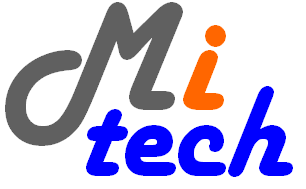株式会社MITECH
Machine
Imagination
Technologies
エム・アイ・テク
Useful Sample Codes for VC Smart Camera
(Please see www.vision-components.com for more information)
| load image & resize it | ============ image imgFromFile, imgFromFileResized;; ImageAllocate(&imgFromFile, IMAGE_GREY, width_org, height_org); ImageAllocate(&imgFromFileResized, IMAGE_GREY, width, height); fread_image(img_name, &imgFromFile); resample_bilinear(&imgFromFile, &imgFromFileResized); ImageFree(&imgFromFile); ImageFree(&imgFromFileResized); ============ |
| save image | ============ rc = fwrite_image(path, &(cpt.sen[0].img)); rc = fwrite_image(path, &imgFromFile); ============ |
| access to pixels | ============ image *img; // input image int y, x; int row[img->dx]; memset(row, 0, img->dx*sizeof(int)); //project (sum of) columns to row [width] for (x=0; x < img->dx; x++) { for (y=0; y < img->dy; y++) { row[x]+=img->st[y*img->pitch + x]; } } ============ |
| snap image | ============ // we can use vc_capt(&cpt) // or vc_capt_request(&cpt) // and vc_capt_wait(&cpt,-1); // the snap times are the same (~ 35 ms) I32 rc=0, err=0; VCCamCfg cam; VCCaptCfg cpt; // init the camera rc = vc_license_init("vclib"); if(rc<0){err=rc; goto end;} rc = vc_cam_init(&cam, &cpt, NULL, NULL, NULL); cpt.sen[0].img.type = IMAGE_GREY; //IMAGE_RGB; select this if rgb camera if(rc<0){err=rc; goto end;} cpt.sen[0].shutter = 12345; rc= vc_capt(&cpt); //This function sends a request for an image acquisition and then waits for the image to be taken. There is no timeout. rc= vc_capt_request(&cpt); // This function sends a request for an image acquisition. // A successful image acquisition is based on a proper initialized and set up capture configuration rc= vc_capt_wait(&cpt,-1); //This function waits for an image acquisition requested by the function named vc_capt_request() to be finished. if(rc<0){err=rc; goto end;} ... end: vc_capt_deinit(&cpt); vc_cam_deinit(&cam); ============ |
| save image | ============ image img; ... fwrite_image(fname, img); ============ |
| draw & fill rectangle | void
drawRect(image *img, RECT r, U8 color) { lined(img, r.x, r.y, r.x + r.width, r.y, color); lined(img, r.x + r.width, r.y, r.x + r.width, r.y + r.height, color); lined(img, r.x + r.width, r.y + r.height, r.x, r.y + r.height, color); lined(img, r.x, r.y, r.x, r.y + r.height, color); } void drawRect1( image *img, POINT p1, POINT p2, POINT p3, POINT p4, U8 color) { lined(img, p1.x, p1.y, p2.x, p2.y, color); lined(img, p1.x, p1.y, p4.x, p4.y, color); lined(img, p3.x, p3.y, p2.x, p2.y, color); lined(img, p3.x, p3.y, p4.x, p4.y, color); } ============ // use drawRect function RECT roi; ... drawRect(img, roi, 200); ============ POINT p1, p2, p3, p4; ... drawRect1(img, p1, p2, p3, p4, 128); POINT p[4]; // assign values to p ... // fill rectangle int pList[8]; for (x=0; x<4; x++) { pList[x*2] = p[x].x; pList[x*2+1] = p[x].y; } fill_polygon_simple (img, 0, 4, pList, 255); |
| standard error code | ============ Most of the functions return a standard error code: #define ERR_NONE 0 /* no error */ #define ERR_FORMAT -1 /* image format error */ #define ERR_TYPE -2 /* image type error */ #define ERR_MEMORY -3 /* out of memory */ #define ERR_LICENCE -5 /* licence required */ #define ERR_OPEN -19 /* open error */ #define ERR_MODEL -51 /* model does not fit licence */ ============ |
| measure time | ============ double time_now() { struct timeval tv; gettimeofday(&tv, NULL); return ((double)tv.tv_sec + ((double)tv.tv_usec*1.0e-6)); } ============ |
Copyright©2016 Machine Imagination Technologies. All rights reserved.
